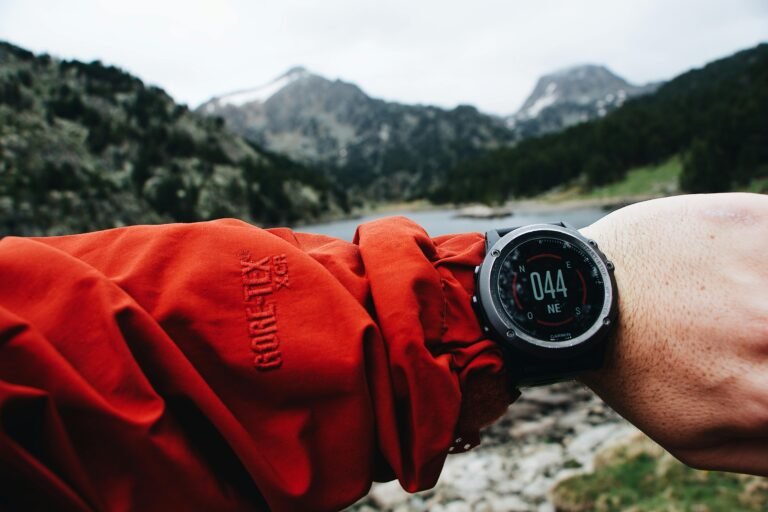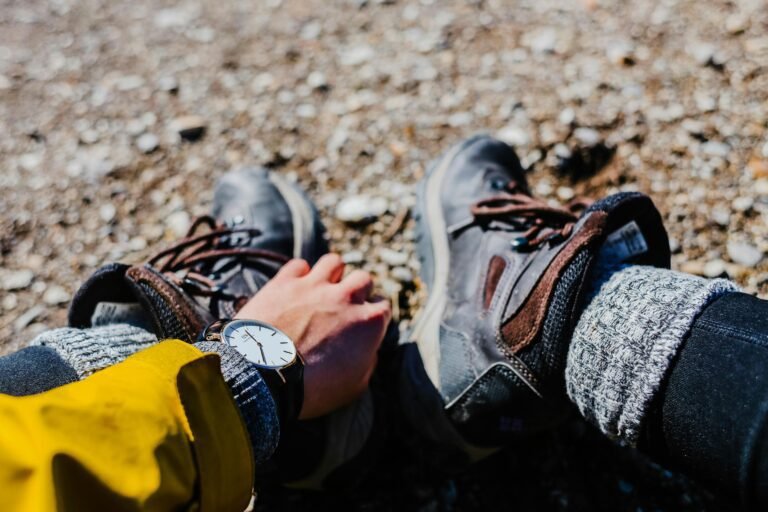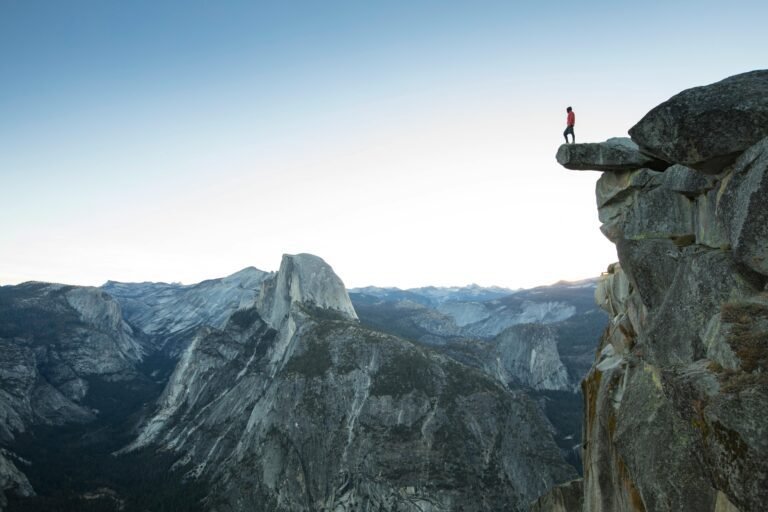How to Plan a Safe and Enjoyable Desert Trek

Setting out on a desert trek is one of the best ways to strip life down to the essentials—just you, the sand, and the endless horizon. When planning a desert trek, it’s essential to prepare adequately for this unique challenge.
In this guide, I’ll cover the essentials—from packing smart to staying safe—so you can take on the desert with confidence.
Let’s get into it.
Choosing Your Desert
Picking the right desert is where the adventure really begins. Every desert has its own vibe—unique challenges, landscapes, and stories to tell.
Matching your choice to your goals, experience level, and personal preferences is the foundation of a trek you’ll never forget.
What to Consider
Climate
Desert weather is all about extremes—blistering heat during the day, bone-chilling cold at night. Check the seasonal temperatures to avoid getting caught off guard. For instance, spring and fall make the Mojave more comfortable, while winter is prime time for the Thar Desert.
Terrain
What kind of scenery are you after? Sand dunes? Rocky outcrops? Or the alien-like beauty of salt flats? The Sahara’s golden dunes are iconic but grueling, while the Atacama offers stark, otherworldly landscapes perfect for contemplation.
Accessibility
Some deserts, like the Mojave, are easy to reach with urban hubs nearby. Others, like remote stretches of the Sahara, demand a lot more planning to get in and out.
Skill Level
New to desert trekking? Stick to places with marked trails and manageable terrain. If you’re experienced and up for a challenge, deserts like the Atacama or Sahara offer vast, rugged landscapes that push your limits.
Desert Highlights
Sahara Desert (Africa)
The Sahara’s sweeping dunes are legendary. Multi-day treks here often include camel rides and nights under a starlit sky—a bucket-list experience for many.
Mojave Desert (USA)
Famous for its Joshua trees and dramatic rock formations, the Mojave is ideal for shorter, beginner-friendly treks with plenty of accessible routes.
Atacama Desert (South America)
As the driest place on Earth, the Atacama’s barren beauty is mesmerizing. Think unique geological wonders and otherworldly silence.
Thar Desert (India)
The Thar combines natural beauty with cultural charm. You can explore rolling sand dunes alongside visits to vibrant villages and historic forts.
for a more detailed look checkout -> Top 5 Desert Trekking Destinations Around The World
Permits and Regulations
Deserts are fragile ecosystems, so many require permits to protect their natural beauty. Do your homework on the rules and permits specific to your destination:
- The Mojave often requires permits for overnight stays.
- Protected zones in the Sahara may have additional restrictions.
Proper planning keeps your adventure smooth and hassle-free while ensuring you respect the environment and local regulations.
Gear Essentials

When you’re heading into the desert, your gear isn’t just stuff—it’s survival. The right setup keeps you comfortable, safe, and focused on the journey instead of fighting the elements.
Planning a desert trek means packing smart, sticking to essentials, and making sure every item earns its place in your pack.
Clothing Essentials
Breathable, Moisture-Wicking Layers
Stick to lightweight, loose-fitting clothes that protect you from the sun and let your skin breathe. Long sleeves and pants might not seem intuitive, but they shield you from sunburn while keeping you cooler.
Layer Up for Temperature Swings
Deserts don’t play fair with temperatures. It’s blazing during the day and freezing at night. Bring a packable down jacket or similar insulated layer to handle the nighttime chill.
Headwear and Sun Protection
A wide-brimmed hat or a cap with a neck flap is your best friend against relentless sun. Pair that with sunglasses offering 100% UV protection to keep your eyes sharp and safe.
Footwear
Ventilated Desert Hiking Boots
Your boots should breathe as much as you do. Look for sturdy soles, good support, and a snug fit to keep sand from creeping in.
Blister-Proof Socks and Gaiters
Moisture-wicking socks are non-negotiable, and seamless ones help prevent blisters. Gaiters add an extra layer of defense against sand invasion.
Protective Gear
Sunblock Arsenal
A high-SPF sunscreen is crucial—don’t skimp on reapplying every couple of hours. SPF lip balm protects one of the easiest-to-forget but most vulnerable areas.
Gloves and Scarves
For sandstorms or icy nights, these small items make a big difference. A scarf can double as a face shield or head cover in a pinch.
Camping Gear
Ventilated Tent
A lightweight tent with plenty of airflow and a reflective surface to deflect heat is key. Remember, you want something compact but sturdy enough for desert winds.
Desert-Ready Sleeping Bag
Pick a sleeping bag rated for cold desert nights. A lightweight sleeping mat adds insulation from the ground and makes rest more comfortable.
Lighting
Headlamp with Backup Power
A reliable headlamp is worth its weight in gold, especially when you’re setting up camp or trekking after dark. Always bring spare batteries or a backup light.
Extra Gear
Backpack
Choose a lightweight yet durable backpack that evenly distributes weight. It needs enough room for water, food, and essentials without being a burden.
Multi-Tool or Knife
This little gadget is your all-in-one solution for emergencies, repairs, or food prep.
Portable Power Bank
Essential for keeping devices like GPS, phones, or headlamps juiced up.
Hydration, Nutrition, and Safety

When it comes to trekking through the desert, hydration and nutrition aren’t just important—they’re survival essentials.
The desert’s heat and dry air can drain you fast, so having a solid plan for water and food is non-negotiable. Here’s how to stay fueled and hydrated for the journey ahead.
Calculating Your Water Needs
Daily Requirements
At minimum, you’ll need about 1 gallon (4 liters) of water per day. If the heat cranks up or you’re covering tough terrain, this can jump to 1.5–2 gallons (6–8 liters).
Listen to Your Body
Signs of dehydration, like dizziness, dry mouth, or dark urine, mean you’re falling behind. Sip water steadily throughout the day instead of waiting until you’re thirsty.
Water Storage Solutions
Hydration Packs
Hands-free hydration packs with built-in bladders are a game-changer, letting you drink without stopping your stride.
Collapsible Bottles
These are lightweight, easy to carry, and don’t take up space when empty—perfect for trekking.
Emergency Backup Options
Always carry purification tablets, a portable filter, or a UV sterilizer. Natural water sources are rare in the desert, but if you find one, you’ll want to make it safe to drink.
Balancing Hydration with Electrolytes
Electrolyte Powders or Tablets
Sweating depletes your body of essential salts and minerals. Add an electrolyte mix to your water to stay balanced.
Packaged Drinks
Pre-made electrolyte drinks can work too, but they’re heavier. Use them sparingly and prioritize powders for weight-saving.
Smart Nutrition for Energy
High-Calorie, Non-Perishable Foods
In the desert, it’s about fuel efficiency—foods that pack a lot of energy into a small, lightweight form. Some staples include:
- Trail mix with nuts, seeds, and dried fruits
- Energy and protein bars
- Dehydrated or freeze-dried meals
Quick Snacks
Compact options like beef jerky, peanut butter packets, or hard cheese are perfect for energy on the go.
Easy-Prep Meals
Choose meals that don’t require much water to prepare. Oatmeal packets are a great option—they’re lightweight, energizing, and need minimal water.
Timing Your Hydration and Meals
Hydration Tips
Sip water regularly instead of chugging it. During peak heat, pair water with electrolytes to prevent imbalances.
Meal Timing
Small, frequent meals keep your energy steady. Heavy meals can leave you feeling sluggish, so keep it light but consistent.
Common Pitfalls to Avoid
Sugary Drinks
These might seem like a quick fix, but they can lead to energy crashes and don’t hydrate as well as water or electrolyte solutions.
Underestimating Water Needs
Always bring more water than you think you’ll need. Desert conditions can surprise you, and it’s better to carry the extra weight than risk running dry.
Emergency Hydration Tips
Finding Water Sources
In an emergency, look for signs of water—damp sand, green plants, or dry riverbeds. If you’re lucky enough to find water, always purify it before drinking.
Avoid Overhydration
Drinking too much water without electrolytes can lead to hyponatremia, a condition where your sodium levels drop dangerously low. Balance is key.
By staying ahead of dehydration and fueling yourself with the right foods, you’ll have the energy and focus to navigate the challenges of the desert. It’s not just about surviving—it’s about thriving in one of nature’s most extreme environments.
Navigation and Terrain

The desert’s vast, open landscapes can feel both freeing and disorienting. Without clear trails or obvious landmarks, navigating becomes one of the most demanding parts of planning a desert trek.
With the right tools, knowledge, and mindset, you can stay on course and keep your trek safe.
Tools for Navigation
Physical Maps
Always carry a detailed topographical map of your trek area. Unlike digital tools, maps don’t run out of battery or fail when you need them most. Learn to read contour lines and landmarks before you go.
GPS Devices
Modern GPS devices make navigation precise and convenient. Fully charge your device before starting, and pack a solar charger or spare batteries to keep it running.
Compasses
A reliable compass is non-negotiable. Practice using it alongside your map so you’re not caught off guard in a featureless area.
Reading the Desert Landscape
Spotting Landmarks
Even in the desert, distinct features like rock formations, dune patterns, or vegetation clusters can act as natural guides. Train your eye to notice and remember these details.
Terrain Clues
- Darker Ground: Compact sand or rocky terrain that may offer better footing.
- Vegetation: A sign you might be near water or moisture in the soil.
- Dry Riverbeds: Often tempting to follow but risky due to flash flood potential.
Danger Zones
Avoid wadis or low-lying areas where water could rush through during storms, even if they look bone dry.
Handling Extreme Weather
Daytime Heat
Schedule your trek for the cooler parts of the day—early morning or late afternoon. Rest in shaded areas during peak heat to conserve energy and avoid overheating.
Nighttime Cold
Bring insulated layers and a good sleeping bag. Temperatures can plummet after sunset, and the cold can catch you off guard.
Sandstorms
Carry goggles, a scarf, or a face covering to protect your eyes and mouth. If a storm hits, find shelter quickly and stay put until it passes.
Navigational Challenges
Deceptive Distances
In the desert’s open expanse, objects often seem closer than they are. Rely on your map or GPS to estimate distances accurately rather than trusting your eyes.
Shifting Dunes
Wind constantly reshapes sand dunes, making them unreliable as landmarks. Focus on fixed features like mountains or rock formations instead.
Getting Lost
If you lose your sense of direction, stop moving. Use your map, compass, or GPS to reassess your position. Wandering aimlessly only makes things worse.
Staying on Track
Plan Checkpoints
Break your route into sections, marking specific checkpoints on your map or GPS. These milestones help you measure progress and recalibrate if needed.
Mark Your Path
Subtle markers like small piles of rocks (cairns) can help you retrace your steps. Be mindful not to disturb the environment.
Travel with a Partner
Whenever possible, trek with someone. Two heads are better than one for spotting landmarks or troubleshooting problems.
Emergency Navigation Techniques
Using the Sun
In the northern hemisphere, the sun arcs through the southern sky. Track its position to maintain a rough sense of direction.
Navigating by Stars
At night, the North Star (Polaris) is a reliable anchor for northern navigation. Practice identifying it before your trip.
Listening for Clues
In some areas, faint sounds like running water, vehicle engines, or even wildlife activity can guide you toward civilization or resources.
By mastering these techniques and paying attention to the terrain, you’ll not only survive the desert—you’ll thrive in it. Navigating with confidence turns the desert from an intimidating expanse into an adventure you’re fully prepared to tackle.
Emergency and Risk Management

The desert is beautiful but unforgiving. Its extreme conditions demand respect and preparation. Safety isn’t just about reacting to dangers—it’s about planning ahead to avoid them.
Here’s how to handle the unique challenges of a desert trek and keep yourself protected.
Avoiding Heatstroke and Dehydration
Recognizing Heatstroke
Watch for signs like confusion, nausea, rapid heartbeat, and, ironically, a lack of sweating even when it’s hot. If someone shows these symptoms:
- Move them to shade immediately.
- Hydrate slowly—too much water too fast can be harmful.
- Cool them down with wet cloths or sprays.
Preventing Heat-Related Issues
- Stick to light-colored, loose clothing that reflects heat and allows airflow.
- Take breaks in shaded areas, especially between 10 a.m. and 4 p.m.
- Stay hydrated steadily throughout the day, pairing water with electrolytes to maintain balance.
Protecting Yourself from Wildlife and Insects
Wildlife Precautions
Snakes, scorpions, and spiders are more scared of you than you are of them, but accidental encounters can happen.
- Always wear closed shoes.
- Avoid reaching into crevices or under rocks blindly.
- Use a walking stick to probe ahead on unmarked paths.
Dealing with Insects
Mosquitoes and flies may show up near water. Protect yourself by:
- Wearing long sleeves and pants.
- Applying insect repellent to exposed skin.
Emergency Response
If bitten or stung:
- Stay calm and minimize movement to slow venom spread.
- Immobilize the area and seek medical help as soon as possible.
Dealing with Sandstorms
Early Warnings
Sandstorms often appear as a wall of dust on the horizon. Strong winds and a sudden drop in visibility can be signs one is approaching.
Protecting Yourself
- Wear goggles or wrap a scarf around your face to shield your eyes, nose, and mouth.
- Find shelter behind large rocks, dunes, or in your tent until the storm passes.
Post-Storm Safety
Check your gear for damage and ensure visibility is safe before continuing.
Creating an Emergency Plan
First-Aid Kit Essentials
Include basics like bandages, antiseptic wipes, blister treatments, pain relievers, and antihistamines. Know how to treat minor injuries and recognize severe conditions like heat exhaustion.
Signaling Devices
A whistle, mirror, or brightly colored cloth can help you signal for help.
Personal Locator Beacon (PLB)
A PLB sends a GPS distress signal to emergency responders. It’s a must-have if you’re trekking in remote areas.
Staying Alert to Environmental Hazards
Flash Floods
Dry riverbeds (wadis) might look inviting, but they can fill rapidly after rain—even miles away. Avoid them, and always have a quick escape route in mind.
Uneven Terrain
Loose sand, rocky inclines, and steep slopes are common. Trekking poles can help with balance and reduce strain.
Mental and Emotional Preparedness
Staying Calm Under Pressure
Stress clouds judgment. Practice mindfulness or breathing techniques to stay focused. When in doubt, pause, assess the situation, and act deliberately.
Group Communication
If you’re trekking with others, agree on hand signals or phrases for emergencies. Clear communication is critical in tense moments.
By being proactive and staying vigilant, you can manage risks and enjoy your trek with confidence. Safety in the desert isn’t about avoiding challenges—it’s about being ready to face them head-on.
Conclusion
Planning a desert trek might feel overwhelming at first, but with the right preparation and mindset, it transforms into an adventure you’ll treasure forever. From picking the perfect desert and packing wisely to staying hydrated and prioritizing safety, each step lays the foundation for a journey that’s as rewarding as it is unforgettable.
Deserts are unlike any other place on Earth. Their vast, endless landscapes, profound silence, and star-filled skies leave a mark on anyone who ventures into them. When you plan carefully, respect the environment, and embrace the challenges, the desert becomes more than a destination—it becomes an experience that changes you.
So, what’s stopping you? Start planning, choose your dream desert, and take the first step toward the adventure of a lifetime. The desert is waiting—are you ready to answer its call?






